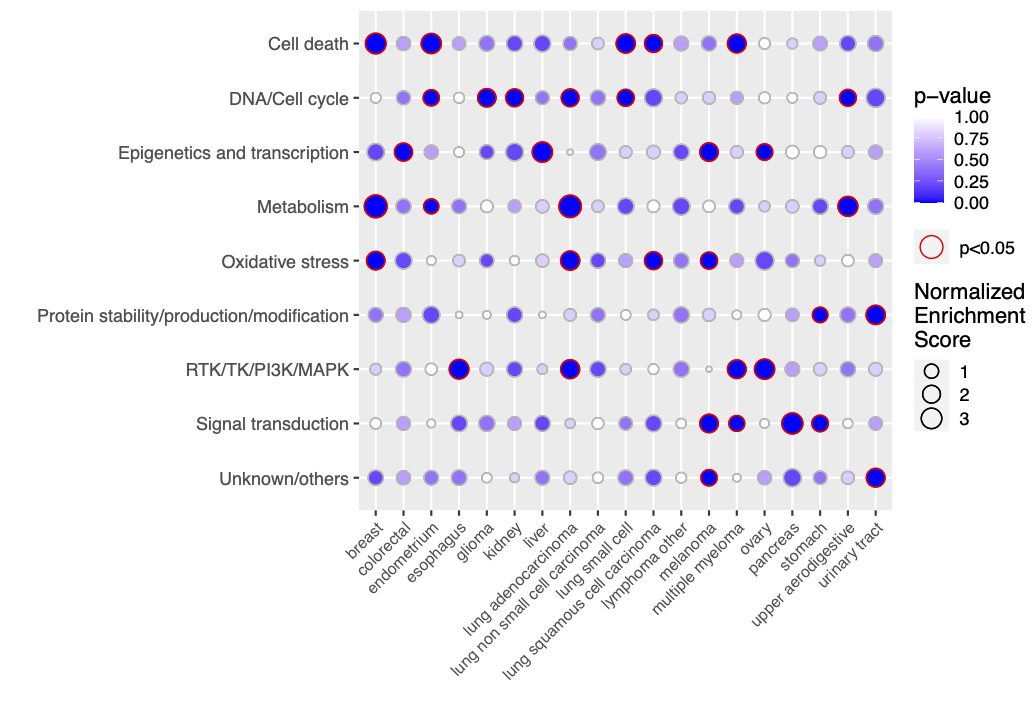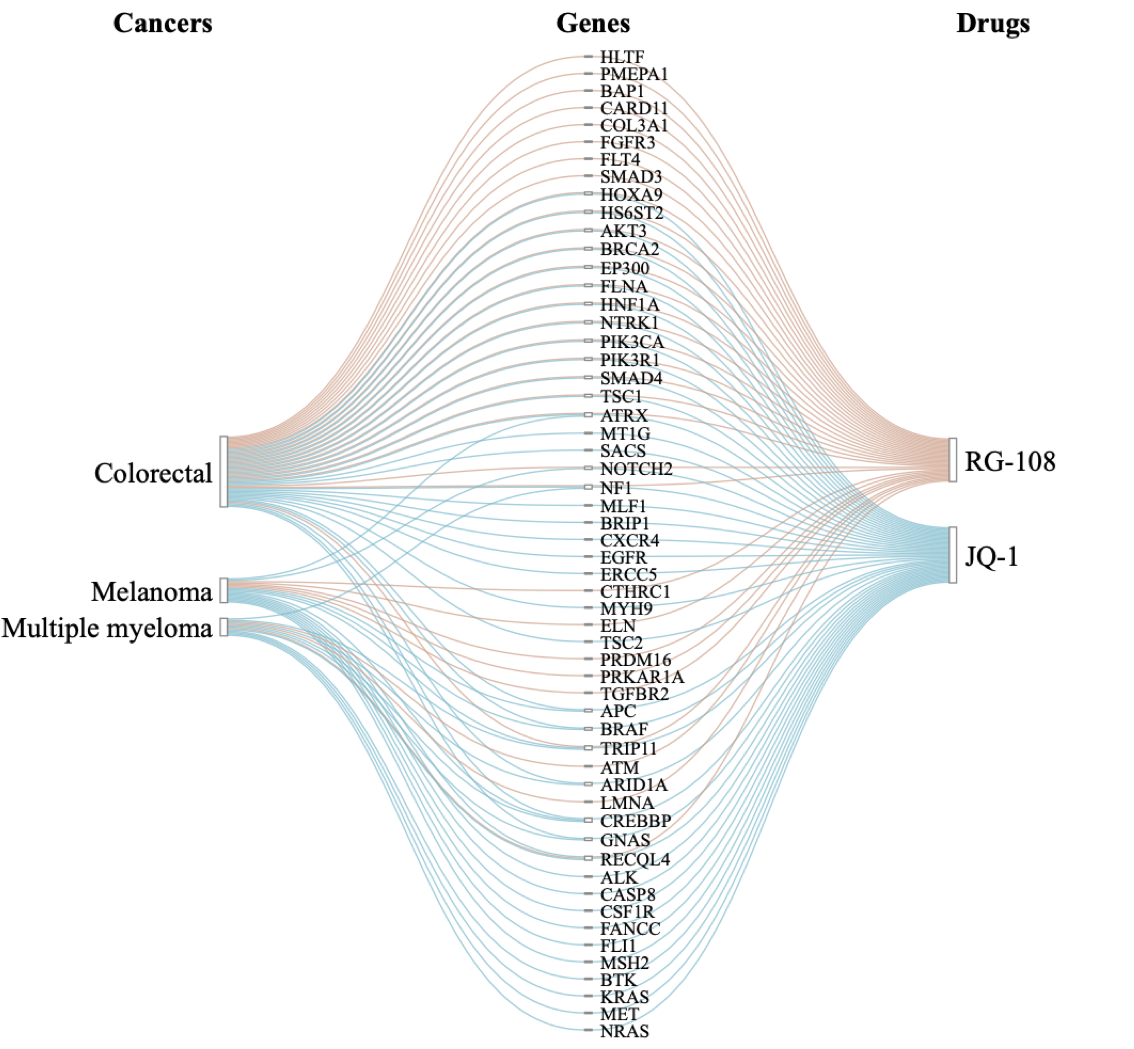This is a flexible R package for enrichment analysis based on user-defined sets. It allows users to perform over-representation analysis of the custom sets among any specified ranked feature list, hence making enrichment analysis applicable to various types of data from different scientific fields. EnrichIntersect also enables an interactive means to visualize identified associations based on, for example, the mix-lasso model (Zhao et al., 2022) or similar methods.
Install the latest released version from CRAN
install.packages("EnrichIntersect")
library("EnrichIntersect")Install the latest development version from GitHub
#install.packages("remotes")
remotes::install_github("ocbe-uio/EnrichIntersect")
library("EnrichIntersect")Data set cancers_drug_groups is a list including a score
dataframe with 147 drugs as rows and 19 cancer types as columns, and a
dataframe with nice pre-defined drug groups (1st column) of the 147
drugs (2nd column).
data(cancers_drug_groups, package = "EnrichIntersect")
x <- cancers_drug_groups$score
custom.set <- cancers_drug_groups$custom.set
set.seed(123)
enrich <- enrichment(x, custom.set, permute.n = 5)
Data set cancers_genes_drugs is an array with
association scores between 56 genes (1st dimension), three cancer types
(2nd dimension) and two drugs (3rd dimension).
data(cancers_genes_drugs, package = "EnrichIntersect")
# better to use argument `out.fig = "pdf"` for printing a pdf or html figure
intersectSankey(cancers_genes_drugs, step.names = c("Cancers","Genes","Drugs"))
Zhi Zhao, Manuela Zucknick, Tero Aittokallio (2022). EnrichIntersect: an R package for custom set enrichment analysis and interactive visualization of intersecting sets. Bioinformatics Advances, vbac073. DOI: 10.1093/bioadv/vbac073.
Zhi Zhao, Shixiong Wang, Manuela Zucknick, Tero Aittokallio (2022). Tissue-specific identification of multi-omics features for pan-cancer drug response prediction. iScience, 25(8): 104767. DOI: 10.1016/j.isci.2022.104767.